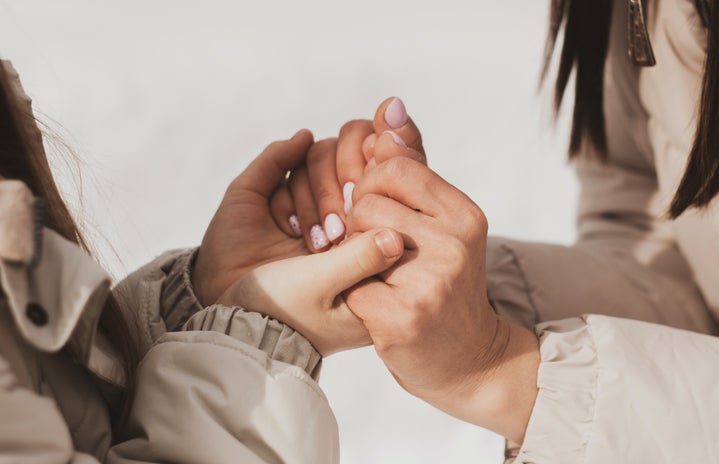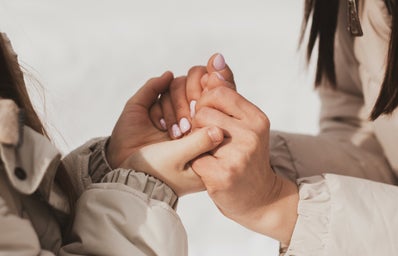If you’re one for romance, chances are you’ve got a certain trope you just adore. For some, it’s enemies to lovers (maybe it’s the idea that even someone who’s seen the worst in you can still love you). Others may prefer fake dating (when are they finally going to admit they’re not just playing pretend?). While there are definitely some tried-and-true romance tropes that are fun to indulge in, others can promote abusive or unhealthy behavior, exacerbate stereotypes about marginalized groups, and just in general idealize toxic ideas. Times have changed—let’s leave these four harmful tropes behind.
Potential trigger warning: This article will touch on grooming, homophobia, and ethnic stereotyping.
- “Teacher and Student Relationship”
Aside from the disturbing factor of the age difference in these kinds of relationships, the power dynamic in the teacher-student trope makes it unhealthy. When someone like a teacher has power over a students’ grades, report card, and in many ways their future, there’s no way for a relationship like this to play out in a healthy fashion. Though it may have been romanticized in shows like Pretty Little Liars for a high schooler to be involved with her teacher, it is, at the end of the day, a grown person preying on someone they have power over. Representing positive, healthy relationships in media can be a great way to communicate to younger audiences what they should and shouldn’t put up with, so let’s leave Teacher/Student tropes in the past.
- “Bury your Gays”
This name refers to the trope in which a piece of media’s only LGBT characters suffer some unfortunate death by the end of the story. This trope has deep roots — back in 1929 when The Hays Code was created, limiting what could be shown in film, queerness was seen as perversion. Because it was regarded so negatively, it was generally only allowed to be portrayed in movies if that queerness was either villainized (such as in Hitchcock films or the onslaught of queer-coded Disney villains in the 1980s and 1990s), or punished. As a result, many LGBT stories, particularly those with lesbians, result in one or more of the characters suffering some sort of tragic end. While the Hays Code is no longer controlling what’s represented in film, it’s still made its mark on media. Hopefully we will be seeing more LGBT movies such as “The Half of It,” which portray a sweet WLW relationship not confined to misery and despair.
- “The Depraved Bisexual”
Even when LGBT characters are represented without dying, they’re not always represented in the most positive light. The Depraved Bisexual trope is a great example of this, describing a bisexual character whose main character trait seems to be that they want to sleep with everyone all the time. It pushes a harmful message that bisexuals are attracted to every single person they meet and cannot or will not stay loyal to one person. While everyone has their preferences, it’s detrimental to portray all bisexuals as if they are sexual deviants who cheat on their partners without a care. Let’s hope for more positive representation for bisexuals in the future.
- “The Latin Lover” or “The Spicy Latina”
This is another trope with a lot of history, so this article won’t cover all the details. Beginning as a stock character trope in the 1920s, the Latin Lover was usually portrayed as a smooth Hispanic male who was more transparently sexual than his Anglo counterparts. This was usually played opposite of a White female role that audiences could imagine themselves as. The Latin woman is also much more sexualized and exoticized than the more purely-presented anglo saxon woman, portrayed as “fiery” and “hot-blooded” and needing to be tamed by a White man. A very modern example of this would be Maddie Perez from Euphoria—sexualized constantly, eager to get in a fight, and plays submissive to the White Nate Jacobs. This trope is incredibly harmful as it portrays Latino men and women as exotic and inherently more sexual, generalizing the sexual behaviors and desires of an entire ethnic group.
Consuming romance in fiction should be a healthy way to indulge in your fantasies and feel a strong connection to a pairing or situation. And it should be healthy for everyone! These harmful tropes can exclude certain marginalized audiences and perpetuate harmful stereotypes about them. They can influence impressionable audiences into idealizing what are truly unhealthy and toxic relationships. Let’s leave these kinds of tropes in the past and progress towards a more inclusive and healthy representation of romance for everyone.




